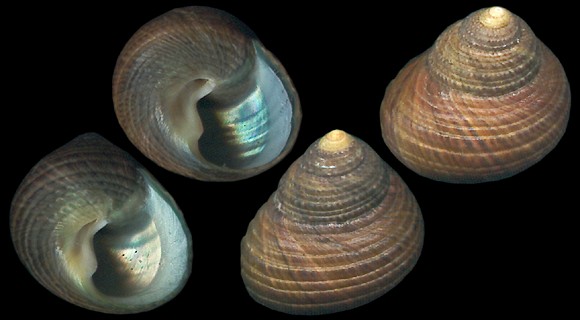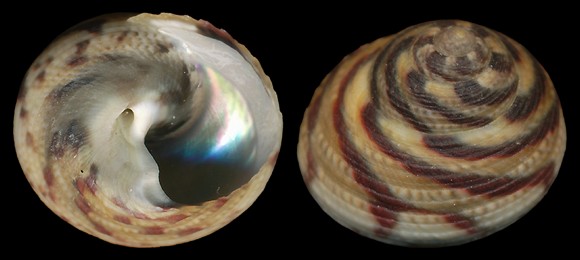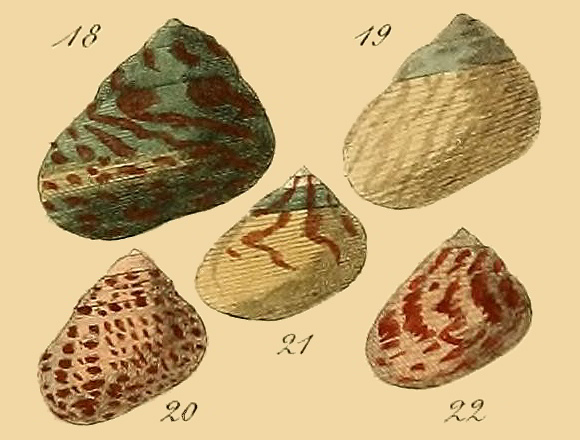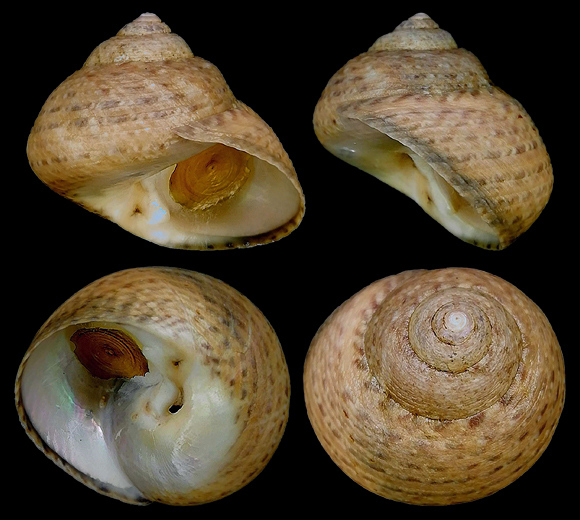
Grazer and deposit feeder in the upper infralittoral.
Original taxon: Trochus mutabilis.
Shallow water, Siracusa, SE. Sicily. 12-12mm. Unpatterned specimens like these two are uncommon.

Variants acutidens, divaricatoides, farolito.
Compared to Phorcus turbinatus, the shells of this species are « smaller, lower-spired, with the walls somewhat thin, and with numerous finer stripes that are even noticeable on the last whorl. Umbilicate in youth, they often continue to be when adult – at least do they show a perforation […] The majority of the specimens are painted on yellowish ground with oblique, often strongly zigzagged blood-red stripes… » – R. A. Philippi: “Die Kreiselschnecken oder Trochoideen”, Systematisches Conchylien Cabinet Bd.2:Abt.3, Nürnberg 1846 (but the page was issued in 1851), p.166.
2m deep, on stones, Bozcaada island, Çanakkale, W. Marmara, NW. Turkey. 9mm.

« Individuals speckled with checkerboard, even with black, may indeed occur, but are rare; others are yellowish gray, or reddish, even whitish, with fine, slightly darker longitudinal dashes that are like articulated, and often decorated with red spots at the suture; I also have, from Dalmatia, a raven-black specimen. » – Ibid.
